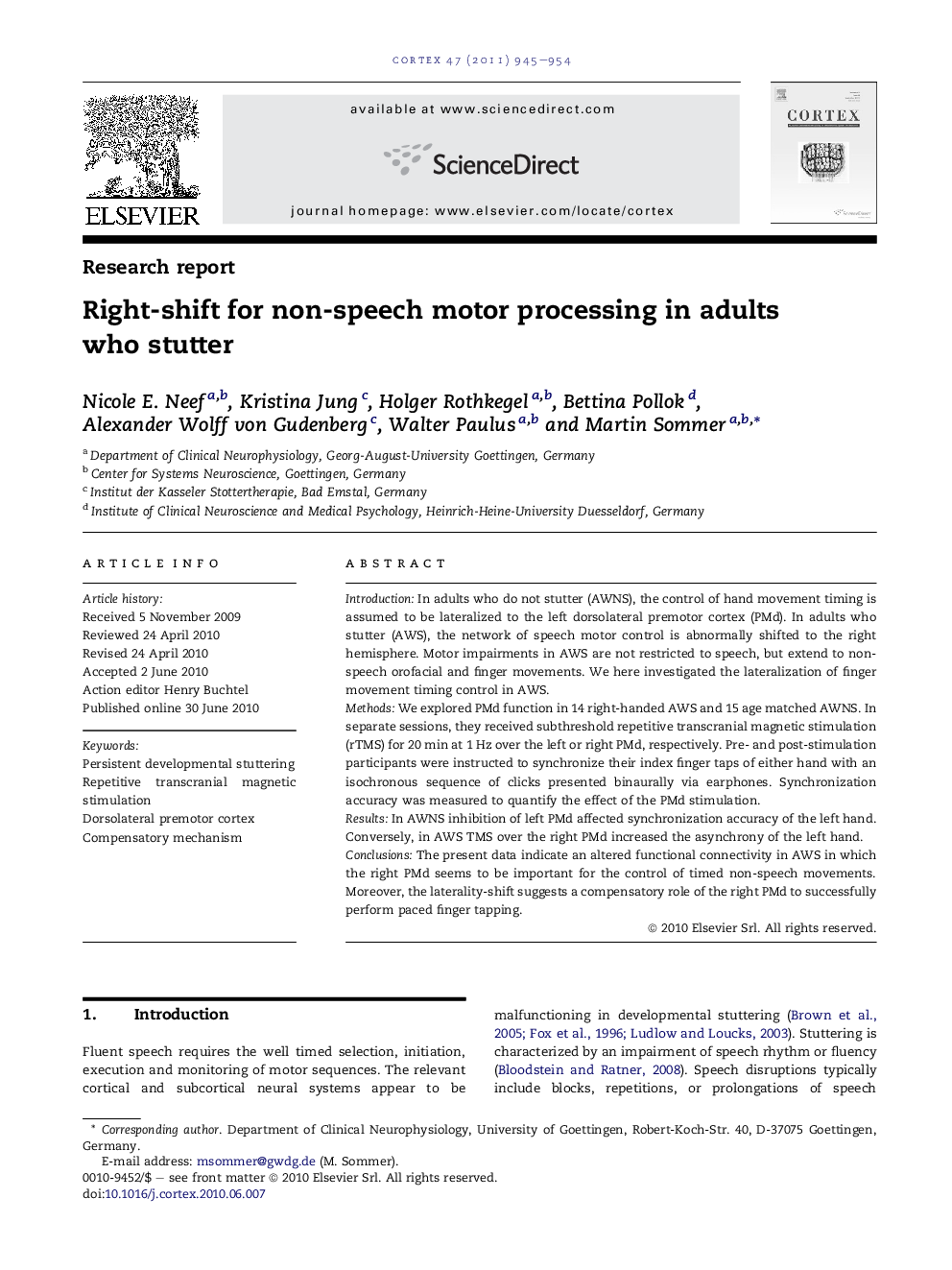| Article ID | Journal | Published Year | Pages | File Type |
|---|---|---|---|---|
| 942292 | Cortex | 2011 | 10 Pages |
IntroductionIn adults who do not stutter (AWNS), the control of hand movement timing is assumed to be lateralized to the left dorsolateral premotor cortex (PMd). In adults who stutter (AWS), the network of speech motor control is abnormally shifted to the right hemisphere. Motor impairments in AWS are not restricted to speech, but extend to non-speech orofacial and finger movements. We here investigated the lateralization of finger movement timing control in AWS.MethodsWe explored PMd function in 14 right-handed AWS and 15 age matched AWNS. In separate sessions, they received subthreshold repetitive transcranial magnetic stimulation (rTMS) for 20 min at 1 Hz over the left or right PMd, respectively. Pre- and post-stimulation participants were instructed to synchronize their index finger taps of either hand with an isochronous sequence of clicks presented binaurally via earphones. Synchronization accuracy was measured to quantify the effect of the PMd stimulation.ResultsIn AWNS inhibition of left PMd affected synchronization accuracy of the left hand. Conversely, in AWS TMS over the right PMd increased the asynchrony of the left hand.ConclusionsThe present data indicate an altered functional connectivity in AWS in which the right PMd seems to be important for the control of timed non-speech movements. Moreover, the laterality-shift suggests a compensatory role of the right PMd to successfully perform paced finger tapping.
